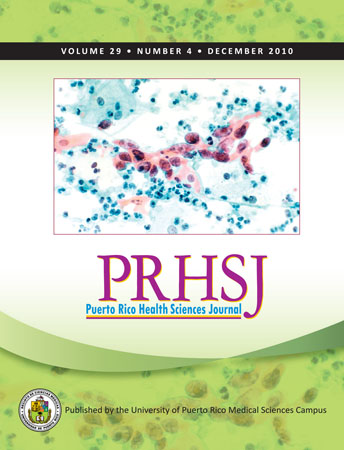Abstract
Objective: Short-term benefits of achieving sustained virologic response (SVR) to treatment for hepatitis C virus infection (HCV) have been well established. However long-term data on benefits of achieving SVR has just begun to emerge. The purpose of this study was to determine whether SVR truly represents long- term viral eradication in a Latino veteran population and document clinical and biochemical outcomes in this group. Methods: This was a two-phase study, which consisted of a single center retrospective study followed by a cross-sectional analysis which includes a single clinic visit. The first phase of the study consisted of a retrospective record review of all HCV patients treated at the VA Caribbean Healthcare System from 1990 to 2006. Records were reviewed to identify patients who had completed therapy, had documented SVR and at least 12 months of time elapsed since end of therapy. The second phase of the study entailed a single appointment to the gastroenterology research clinics, for blood testing and a short risk factor questionnaire. Results: Sixty four patients were enrolled; mostly males with a mean age at time of enrollment of 54.3 years (range 37-72). One hundred percent of subjects self reported their ethnicity as Hispanic, born in Puerto Rico. Most of our population had HCV genotype 1. Forty seven of 64 (73.4%) patients were naive to therapy while 4 (6.3%) were previously treated. In 13 (20.3%) patients, the prior treatment status could not be clearly established. Regarding therapy used to achieve SVR, 32 (50.0%) patients received interferon (IFN) and ribavarin, 28 (43.8%) peginterferon (PEG) and ribavarin and 4 (6.3%) IFN monotherapy. There was no statistical difference in longterm SVR among these 3 three treatment alternatives. A pre-treatment biopsy specimen was available on 37/64 (57.8%) of our subjects. Marked fibrosis and/or cirrhosis was present in 14/37 (37.8%) subjects who had a pre-treatment biopsy. At the time of the study visit mild elevation of aspartate aminotransferase (AST) was identified only in 5 (7.8%) patients. Alanine aminotransferase (ALT) and bilirubin were normal. Only 3/64 (4.7%) had elevations in alkaline phosphatase. None (0/58) of the patients who presented with normal enzymes had detectable viral load, whereas 20% (1/5) of those with elevated liver function tests had evidence of viremia (p < 0.001). Overall, only 1 (1.6%) patient of our study group had evidence of virological relapse after having achieved SVR, which was documented 30 months after the end of therapy. No identifiable risk factors for re-infection were identified. Conclusion: In conclusion, in this Latino veteran population, achievement of (SVR) is a good predictor of clinical outcomes and long-term (HCV) eradication. Altered liver function tests seems to be the best predictor of relapse and should prompt the clinician to investigate for recurrence. For those that after achieving SVR maintain normal liver enzymes, routine follow up viral load demonstrates to have a very low yield and may not be required.
Authors who publish with this journal agree to the following terms:
a. Authors retain copyright and grant the journal right of first publication with the work simultaneously licensed under a Creative Commons Attribution License that allows others to share the work with an acknowledgement of the work's authorship and initial publication in this journal.
b. Authors are able to enter into separate, additional contractual arrangements for the non-exclusive distribution of the journal's published version of the work (e.g., post it to an institutional repository or publish it in a book), with an acknowledgement of its initial publication in this journal.
c. Authors are permitted and encouraged to post their work online (e.g., in institutional repositories or on their website) prior to and during the submission process, as it can lead to productive exchanges, as well as earlier and greater citation of published work (See The Effect of Open Access).
